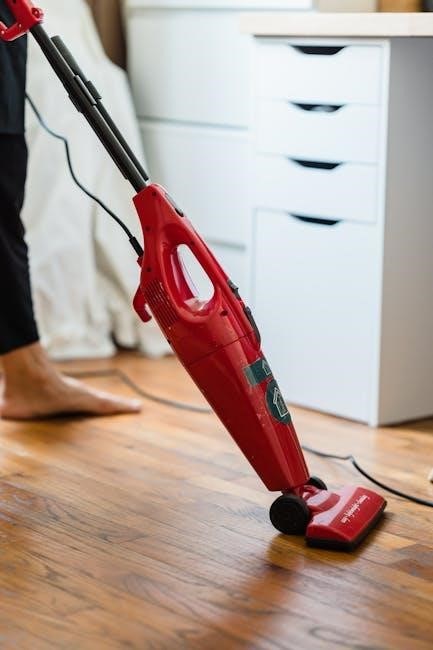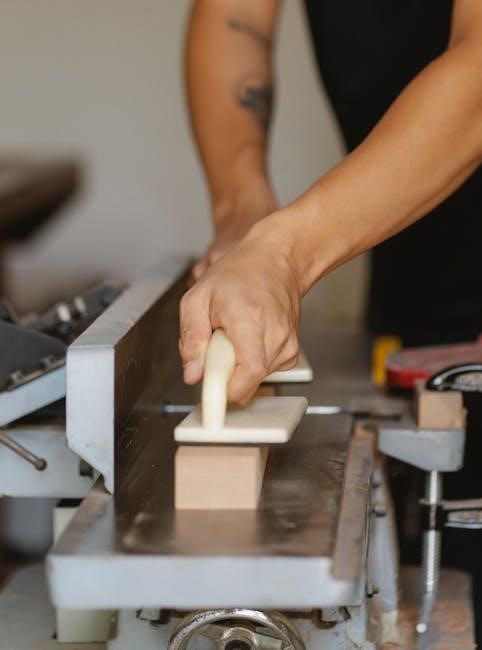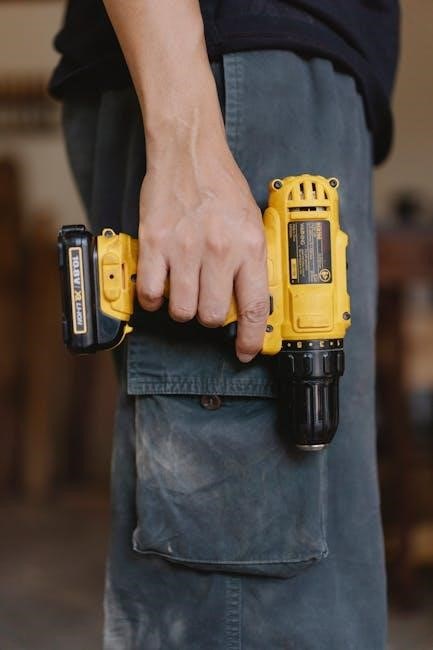Tekonsha Electric Brake Controller Manual: A Comprehensive Guide
This comprehensive guide provides detailed information on Tekonsha electric brake controllers. It covers essential aspects, including features, installation, troubleshooting, and maintenance. The guide helps users optimize braking performance and ensure safe towing experiences with different vehicle and trailer setups.
Understanding Tekonsha Brake Controllers
Tekonsha brake controllers are essential devices that synchronize a tow vehicle’s brakes with those of a trailer, improving control and safety. Understanding how these controllers function is crucial for proper usage and maintenance. Tekonsha offers both proportional and time-delayed controllers, each with distinct operational characteristics. Proportional controllers, like the P3, sense the tow vehicle’s deceleration rate and apply corresponding braking force to the trailer, offering smooth and responsive braking.
Time-delayed controllers, on the other hand, apply trailer brakes after a set delay and at a predetermined intensity. Identifying your controller type and grasping its working principles is essential for optimizing its settings. These controllers are compatible with various vehicles, including Ford, GM, and Toyota, supporting 2 to 8 brakes. Proper understanding also involves recognizing the importance of correct installation and wiring to ensure seamless integration with the vehicle’s electrical system, maximizing safety and braking efficiency.
Key Features and Components

Tekonsha brake controllers are equipped with various features and components that enhance their functionality and user experience. The manual control lever allows for manual activation of the trailer brakes, useful in situations requiring gradual speed reduction. Diagnostic features include indicator lights that display connection status and potential issues. The controllers often have adjustable settings for gain or power output, enabling customization based on trailer weight and braking preferences.
Key components include the main control unit, which houses the electronics, and wiring harnesses for connecting to the vehicle’s electrical system. Some models feature boost settings that adjust initial braking power. The display screen provides real-time information, such as voltage output and diagnostic codes. Compatibility with electric over hydraulic brake systems is another crucial feature, though specific models may be required. Understanding these features and components is essential for proper operation, troubleshooting, and ensuring optimal performance of the Tekonsha brake controller for safe towing.
Installation Procedures
Proper installation is crucial for the optimal performance of a Tekonsha electric brake controller. The first step involves selecting a suitable mounting location inside the tow vehicle. The controller should be easily accessible and viewable, typically under the steering column. Ensure the mounting surface is stable and allows for secure attachment. Next, connect the wiring harness to the controller, following the specific wiring diagram provided in the manual.
The harness typically includes wires for power, ground, brake signal, and trailer brake output. Connect these wires to the corresponding circuits in the tow vehicle. It’s vital to ensure proper grounding to avoid electrical issues. After wiring, securely mount the controller using screws or brackets. Test the connections by activating the brake pedal and observing the controller’s display. Adjust the controller’s settings according to the trailer weight and braking requirements. Finally, perform a road test to verify the trailer brakes are functioning correctly, making any necessary adjustments to the gain settings for optimal braking performance.
Wiring Guide and Connections
Proper wiring is paramount for a Tekonsha electric brake controller to function correctly. Typically, four wires are involved: power, ground, brake signal, and trailer brake output. The power wire should be connected directly to the vehicle’s battery, often through a circuit breaker, to ensure a consistent power supply. The ground wire must be securely connected to the vehicle’s frame to provide a reliable ground path, preventing electrical interference.
The brake signal wire should be connected to the cold side of the brake light switch, which activates when the brake pedal is pressed. This signal tells the controller when to apply the trailer brakes. The trailer brake output wire runs from the controller to the trailer’s electric brakes, delivering the necessary power for braking. Always refer to the Tekonsha wiring diagram specific to your controller model for correct wire colors and locations. Ensure all connections are secure, using crimp connectors or soldering, to prevent loose connections and potential malfunctions. Double-check the wiring before operating the trailer.
Setting Up and Calibrating the Controller
Proper setup and calibration of your Tekonsha brake controller are crucial for optimal performance. Begin by mounting the controller securely within reach and ensuring the display is easily viewable. Next, adjust the initial power level, usually indicated in voltage, based on the weight and braking capacity of your trailer. Start with a lower setting, around 6V, and gradually increase it during the calibration process.
To calibrate, find a safe, level surface and drive at approximately 25 mph. Manually engage the brake lever on the controller. If the trailer wheels lock up, reduce the power setting. If the trailer does not brake adequately, increase the power. The goal is to achieve firm, smooth braking without wheel lockup. Some controllers have boost settings that can be adjusted to provide additional initial braking power. Select the appropriate boost level based on your towing conditions and trailer brake condition. Regularly check and readjust the settings as needed to maintain optimal braking.
Using the Manual Control Lever
The manual control lever on your Tekonsha brake controller serves a vital purpose, giving you direct command over your trailer brakes. Unlike the automatic braking system, which activates in proportion to your vehicle’s deceleration, the manual lever allows you to apply the trailer brakes independently. This functionality is particularly useful in several situations. During the initial setup and calibration of the controller, the manual lever allows you to test the braking force and adjust the power settings.

It is also helpful in situations where you desire to reduce speed gradually, such as descending a steep hill or navigating slippery road conditions. In emergency situations, the manual lever provides an immediate way to apply the trailer brakes, potentially preventing or mitigating a collision. To use the manual lever, smoothly slide it to the left. The farther you move the lever, the more braking force is applied to the trailer brakes, up to the maximum setting.
Troubleshooting Common Issues
Experiencing issues with your Tekonsha brake controller can be frustrating, but many common problems can be resolved with some simple troubleshooting. One frequent issue is weak or no braking on the trailer. Start by checking all wiring connections to ensure they are secure and free from corrosion. Verify that the brake controller is properly grounded, as a poor ground can cause various problems. If the brake lights on your tow vehicle are not functioning correctly, this can also affect the brake controller’s performance.
Inspect the trailer brake magnets for wear or damage, as they are responsible for applying the braking force. Another common symptom is intermittent error codes or a flashing display. Consult your Tekonsha manual to interpret the specific error code and follow the recommended steps. If the controller displays “OL” or “overload,” it may indicate a short circuit in the trailer wiring or a faulty brake magnet. Always disconnect the trailer plug before testing the breakaway switch to avoid damaging the brake controller.

Adjusting Brake Power and Boost Settings
Fine-tuning your Tekonsha brake controller involves adjusting the brake power and boost settings to achieve optimal braking performance. The brake power setting determines the maximum voltage sent to the trailer brakes during braking. Begin by setting the power level according to the manufacturer’s recommendations, typically found in your Tekonsha manual. To properly adjust, drive on a dry, level surface at approximately 25 mph and use the manual control lever to engage the trailer brakes.
If the trailer brakes lock up, reduce the power setting until they no longer lock. Conversely, if the trailer brakes feel weak, increase the power setting. The boost setting, available on some Tekonsha models like the P3, provides an initial surge of power to the trailer brakes for more aggressive braking. Select the boost level based on your towing situation, driving preferences, and the condition of your trailer brakes. Higher boost levels are suitable for heavier loads or when towing in challenging conditions, while lower boost levels are ideal for lighter loads and smoother braking.
Maintenance and Long-Term Care
Ensuring the longevity and reliability of your Tekonsha electric brake controller requires regular maintenance and careful long-term care. Start by periodically inspecting the wiring connections to ensure they are secure and free from corrosion. Clean any corroded terminals with a wire brush and apply dielectric grease to prevent future corrosion. Check the brake controller’s mounting to ensure it remains firmly in place, as vibrations can loosen connections over time.
Regularly test the brake controller’s functionality by performing manual brake tests in a safe, controlled environment. Pay attention to any unusual noises or erratic behavior from the trailer brakes, which could indicate a problem with the controller or the trailer’s braking system. When storing your vehicle or trailer for extended periods, disconnect the brake controller to prevent battery drain and potential damage from power surges. Keep the controller clean and dry, protecting it from extreme temperatures and moisture, which can degrade its performance.
Compatibility with Different Vehicles and Trailers
Tekonsha electric brake controllers are designed for broad compatibility, seamlessly integrating with various vehicles and trailers. These controllers support vehicles with 2, 4, 6, and 8 brakes, accommodating trailers with 1 to 4 axles. Tekonsha controllers are frequently used with Ford, GM, Chevy, Dodge, RAM, Toyota, and Jeep vehicles, ensuring versatility across different brands. Vehicle-specific Tekonsha Plug & Play adapters simplify installation by providing a direct connection without the need for complex wiring;

It’s essential to verify compatibility by consulting the Tekonsha website or your vehicle’s manual to confirm the correct adapter for your specific make and model. Ensure the trailer’s brake system is electric and compatible with the controller’s specifications, as Tekonsha controllers are not designed for electric-over-hydraulic systems. Proper matching of the controller to both the vehicle and trailer ensures optimal braking performance and safety, avoiding potential damage or malfunctions. Always test the setup thoroughly after installation to confirm compatibility and functionality.
